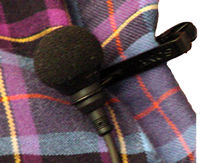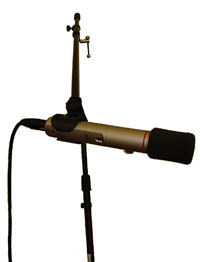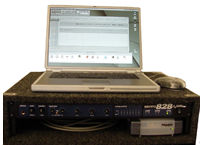 |
|
||||||||||
|
 |
|
||||||||||
|
The last issue of this column featured an audio-based "Interview with an Online Instructor" with Maggie Sokolik. This time I will follow through on the promise to address the audio production from a do-it-yourself perspective by briefly describing how the audio portion of the interview was carried out.
The options in terms of hardware required to produce and deliver online audio interviews are practically unlimited. These range from using an analog tape recorder (an "old-fashioned" but perfectly viable procedure) to all sorts of purely digital setups. I've recently chosen to invest in the latest in firewire-based mobile digital audio systems, the MOTU-828. This is a cross-platform (Mac/Windows) piece of hardware that provides a professional quality digital recording system with plenty of input and output connections for high end microphones, among other analog and digital devices (for example, electric guitars, ADAT devices, etc.).

(Figure 1--Front view of the MOTU 828
)

(Figure 2--Rear view of the MOTU 828
)
The MOTU 828 connects directly to my laptop computer with a single firewire cable.

(Figure 3--One end of a firewire cable
)
I connected two microphones to the MOTU device, one to record the voice of the interviewee and the other for that of the interviewer. To allow for hands-free control, as the interviewer I clipped a lavalier microphone to my shirt collar and placed a second microphone on a stand in front of and slightly above the interviewee, so as to allow her to speak naturally and in a comfortable position.

(Figure 4--The lavalier microphone)

(Figure 5--On-stand Microphone)
To help assure and extend the computer's maximum performance, I've added an external firewire hard-drive on which to record large media files, such as those created in producing audio and video digitally.

(Figure 6--Hardware setup with firewire drive visible underneath the MOTU 828)
With all the equipment connected properly, I chose a quiet location for the setup and performed a few short test recordings just to check for proper input levels and to make sure everything was working as expected. And with that, the interview was ready to begin.
Continue to Part Two of this Column
|
||||||||||||||||||||
| © Copyright rests with authors. Please cite TESL-EJ appropriately.
Editor's Note: Dashed numbers in square brackets indicate the end of each page for purposes of citation. |